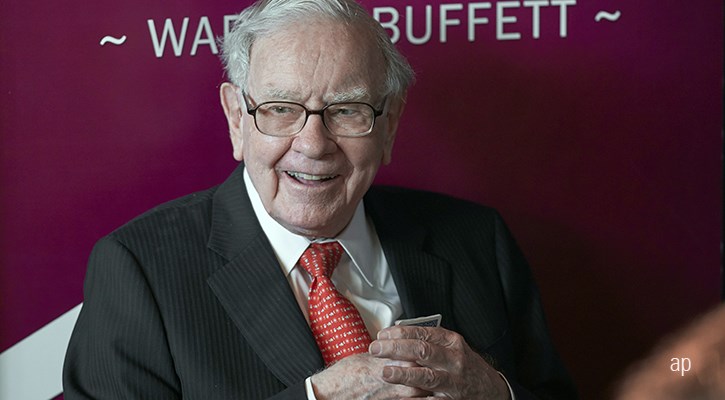
Editor's note: Read the latest on how the coronavirus is rattling the markets and what you can do to navigate it.
Dividends continue to be wildly popular among our readers, as income-hungry investors who are irked by historically low interest rates continue to find interest in dividend stocks that now offering much higher yields. The stocks provide a good alternative for those that require steady distribution of cash from their investments. Consistent dividend payers are also typically large companies that show lower volatility in returns over time.
However, one of the consequences of the economic slowdown caused by the COVID-19 pandemic has been dividend cuts. Morningstar Canada’s director of investment research Ian Tam explained how to avoid companies that might cut dividends here.
He advises that generally speaking, investors are served well to look for companies with conservative or lower dividend payout ratios, or if it used a dividend cover, look for higher dividend cover, and calls the process a ‘balancing act’.
Morningstar Canada’s head of investment management Michael Keaveney also points out that investors should look beyond the headline dividend yield, to how sustainable the dividends and growth of dividends are, and the total payouts, which include the effects of share repurchases. “Indeed, in the long run, our research indicates that the cash flows that corporations supply, including payouts in the form of buybacks as well as dividends, are the ultimate drivers of stock returns,” he says.
With these points in mind, how should you look for dividends?
Selecting the right dividend stocks
How do you pick stocks that might make sense? When we look for stocks, we look at the competitive advantage, margin of safety, and valuation. We want stocks that have a sustainable competitive advantage, or an economic moat. We also added in our “Morningstar Rating for Stocks”, popularly known as the "Star Rating". The rating is determined by three factors: a stock's current price, Morningstar's estimate of the stock's fair value, and the uncertainty rating of the fair value. The bigger the discount, the higher the star rating.
On top of our ratings, we added the dividend payout ratio, which measures how much of a company’s annual earnings are used to pay dividends. A ratio of 1:1 indicates that a firm is giving back all its profits to shareholders. We also look at the historic yield (trailing 12 months) and compare that with the forward yield.
Here’s a look at 10 undervalued stocks in our coverage universe with the highest historic yield, that also have a wide or narrow Economic Moat. One is a rare triple-threat: high yield, wide moat, and undervalued share price:
| Name | Yield | Payout Ratio | Forward Yield % | Economic Moat | Moat Trend | Morningstar Star Rating | Fair Value Estimate |
| Enbridge Inc | 6.83 | 3.09 | 7.15 | Wide | Stable | 4 | 0.80 |
| Great-West Lifeco Inc | 6.61 | 0.76 | 6.81 | None | Stable | 4 | 0.86 |
| Bank of Nova Scotia | 5.86 | 0.59 | 5.91 | Narrow | Stable | 4 | 0.87 |
| Canadian Imperial Bank of Commerce | 5.81 | 0.63 | 5.91 | Narrow | Stable | 4 | 0.85 |
| BCE Inc | 5.37 | 0.97 | 5.57 | Narrow | Stable | 4 | 0.92 |
| Bank of Montreal | 5.36 | 0.56 | 5.44 | Narrow | Stable | 4 | 0.78 |
| The Toronto-Dominion Bank | 4.58 | 0.53 | 4.81 | Wide | Stable | 4 | 0.82 |
| Nutrien Ltd | 4.56 | 1.13 | 4.84 | Narrow | Stable | 5 | 0.61 |
| Royal Bank of Canada | 4.37 | 0.54 | 4.50 | Wide | Stable | 4 | 0.86 |
| Restaurant Brands International Inc | 3.39 | 0.87 | 3.64 | Narrow | Negative | 4 | 0.89 |
Source: Morningstar Direct Data as of June 8, 2020
A word of caution
In the volatility of the past few months, investors have continued to seek opportunities and stay invested, largely sticking to our advice to stay calm and proceed according to goals and plans. As Morningstar’s director of personal finance Christine Benz says, “If you've taken the time to create an asset-allocation plan that makes sense for you given your life stage, you don't want to be monkeying with it in the midst of market volatility.” She points out that especially for younger investors, who have many years until retirement, volatility is your friend. “It doesn't feel like it, but it truly is your opportunity to sit tight with a stock-heavy portfolio, potentially even add more to that portfolio, if you don’t need the money for the next 5-10 years,” she says.




















